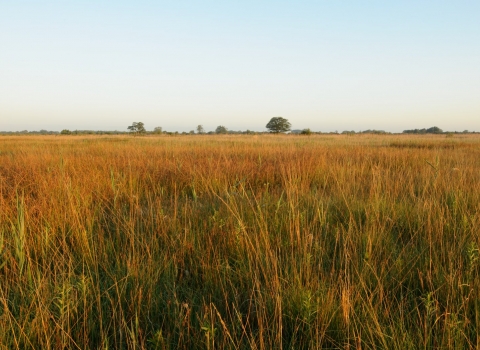The word "fen" describes a habitat somewhere between reedbed and wet meadows, where the water table is close to or above the surface for much of the year. The vegetation can contain reed, but is generally shorter than in reedbeds and includes grasses and sedges, giving views across the landscape.
Fen contains many plant species which provide abundant colour in summer. Purple small-reed and various sedges provide a tall, grassy appearance within which a range of flowering plans grow, such as meadow-rues, yellow loosestrife, greater bird's foot trefoil and hemp agrimony. There are already areas like this in Woodwalton Fen and, to a lesser extent, in Holme Fen.
The future
There will be many areas of 'fen habitat' across the Great Fen and it is likely that the boundaries between fen, reedbed, wet meadows, and wet woodland will often be blurred as one habitat type gives way to another. In some places the boundary may be more clear cut, perhaps split by a path or ditch or by a change in land-management practice such as grazing, or reed cutting. This variety will create a sense of wild, intricate and dynamic landscape.
